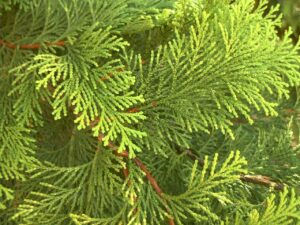Fabric refresher sprays (you know the ones) are full of so many chemicals, including fragrances and preservatives, that you almost forget that they’re also mostly water. These sprays don’t claim to actually clean your fabrics, just to eliminate smells (and add new smells in their place). Nowadays, people are using fabric refreshers, and other products like garbage bags containing fabric refresher chemicals, everywhere. They even spray them into the air as “air fresheners.” Not only are these chemicals used as an alternative to actually washing things, but people are forgetting that before they existed human beings had all manner of removing odours more naturally. Please check to make sure the ingredients listed will not cause you an allergic reaction before using.
 Sunlight
Sunlight
Sunlight has been used for thousands of years to help get rid of smells. The procedure is simple – leave the object outside in sun for somewhere between a few hours and a few days. The light kills odour-causing bacteria, causing the smells to lessen or disappear. Be aware that sunlight can fade fabrics if left for a long time.
Vinegar
Also an ancient remedy, what sunlight alone won’t fix, a spray of vinegar and water may help. You can even use both the sunlight and vinegar methods together. Acids can weaken fibres over time, so make sure to dilute the vinegar, and rinse afterward if possible.
 Air
Air
Air the object out by leaving it outside in a breezy but dry area for a few days. The smells will be reduced.
Baking Soda
Baking soda is used to remove odours in fridges and carpets, as well as containers, cupboards, and more. Just sprinkle some over the surface and leave to sit for a few days, then vacuum, wipe, wash, or rinse the object.
Potpourri
Want something to smell like flowers? Store it with potpourri. Avoid using artificially scented potpourri in favour of the natural.
Soap
Scented soaps will leave scents on the objects they are used to wash, but the scent will be far milder, and a naturally-fragranced soap can be chosen. Soaps can also be used in drawers or bags to lend fragrance to the objects within.

Cedar Leaves
Cedar
Cedar and other aromatic woods not only help keep moths and other insects away, they also add fragrance to fabrics.
Wash the Object
This one seems straightforward. If something smells that badly, and it can be washed, wash it. Don’t put it in the dryer until you’re sure the smell has gone. If you’re still having trouble removing the smell with washing, try adding a few drops (2-3 drops only) of thyme essential oil (thymol) to the detergent dispenser. The thyme oil will help kill any mold and bacteria. Although large quantities of this or any other essential oil can cause problems, this volume in the washing machine with water and detergent or soap will leave little to no smell and truly make your fabric smell cleaner.
 Pet urine smells are something entirely different. Although many websites will list some combination of the above, club soda, or peroxide to clean, you really need an enzyme cleaner if you want to permanently remove the proteins causing the odour and prevent reoffense. The “homemade citrus enzyme cleaner” posted all over the internet probably won’t cut it, as it contains minimal enzymes. I have one in the works, for which I will be posting the recipe once I finish adjusting it.
Pet urine smells are something entirely different. Although many websites will list some combination of the above, club soda, or peroxide to clean, you really need an enzyme cleaner if you want to permanently remove the proteins causing the odour and prevent reoffense. The “homemade citrus enzyme cleaner” posted all over the internet probably won’t cut it, as it contains minimal enzymes. I have one in the works, for which I will be posting the recipe once I finish adjusting it.
